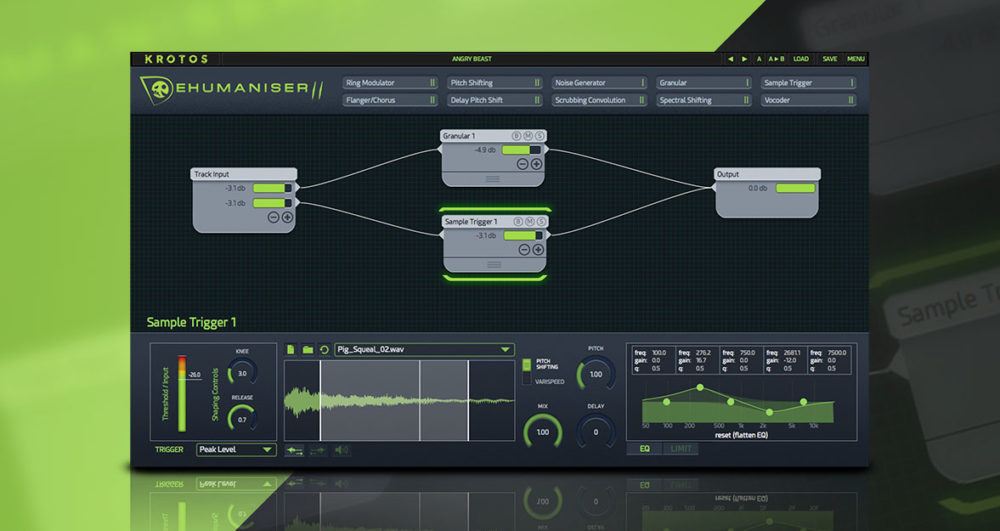No products in the basket.
As the world gets ready for Stranger Things season five, we explore the sound design of the iconic Netflix series
The fifth and final season of Stranger Things will be released on Netflix in three parts: two volumes on November 26 and December 25, 2025, and the finale on December 31, 2025.
With build up to the the show being one of the most anticipated Netflix releases of the year, what better time to look back at it’s retro-nostalgic, yet modern and cinematic, sound design.
Drawing from our interviews with Angelo Palazzo, who worked on Stranger Things 3, we unpack the magic behind these iconic sound effects, and offer some exclusive tips for you to know when making your own iconic sci fi sound effects.
What makes Stranger Things sound design so distinctive?
From the start, Stranger Things has stood out not just for its visual homage to the 1980s, but for a soundscape that blends retro sonic textures with horror/fantasy tension. As seasons progressed, the show pushed harder into immersive creature design, atmospheric ambiences, and visceral audio moments.
By Season 3, the Stranger Things team decided early on that we weren’t going to use any of the SFX or backgrounds from the first two seasons and instead built Season 3 entirely from the ground up.
Moreover, for Season 4 the sound-design crew intentionally went “more aggressive, more greedy, abrasive, and disturbing” to match the darker tone of the story. The result: a show that sounds cinematic, expansive, and uniquely its own.

How the Stranger Things sound was crafted
One of the reasons Stranger Things’ sound design is so memorable is the team’s inventive use of everyday materials, creatively processed to build its eerie atmosphere.
For the creature vocals, like those heard from the Demogorgon and other monsters— Dehumaniser and Reformer Pro come in handy for transform human voices into otherworldly textures:
With Dehumaniser, I can process my voice and get much closer to a final result.”
To capture the unsettling movements of Vecna, season four’s sinewy nightmare of a villain, the team recorded fibrous vegetables including carrots, celery, and cabbages to create a “wet, slimy” sense of twisting vines and tendons.
Palazzo noted that he prefers to “start with the most organic sounds” before tweaking, pitching, and layering them into something unrecognisable. Even household items found their place in the Upside Down: sliding closet doors, squeaky hinges, bending wood, and scraping cardboard were all reimagined into aggressive, creature-like sounds.
The result proves that true sonic creativity begins with the familiar—then stretches, distorts, and layers it into something entirely new.
“Reformer Pro is my go-to-tool for quickly creating new fx layers … Dehumaniser allows me to create very usable tracks that will typically end up in my final build.”

Seven Tips for crafting your own Stranger Things soundscape
- Capture real-world source material
Don’t rely on sound effect libraries alone! Record the world around you for uniqueness and authenticity. - Build a custom library
Once you have recordings, organise them. Label them. Think of them as your palette. Angelo Palazzo spent a whole day recording sounds to build libraries in Reformer Pro - Use tools that support creative morphing and processing
Software like Dehumaniser and Reformer let you turn source material into something unrecognisable yet grounded. - Layer intensively
Many memorable sounds are the result of combining multiple layers — organic + synthetic, near + far, high frequency + low rumble. - Embrace silence and contrast
One of the most effective tools in the Stranger Things toolbox was strategic silence: dropping sound to lull the viewer and then zooming in with an unexpected sonic punch. - Consider the storytelling role of sound
Sound doesn’t just accompany the visuals; it amplifies the world, the emotion, the tension. In the series, sound supports transitions, character beats, reveals. - Workflow discipline
Palazzo describes a production-level workflow: editorial timelines, sound design phases, mix-prep. If you’re doing your own projects, try to replicate stages: source → design → editorial → final mix.
Want to experiment with cinematic sound?
Explore Dehumaniser 2, our creature-design tool used in Stranger Things, and many more Iconic projects.
Save 80%
Buy Now
Dehumaniser 2 is a powerful vocal processing tool perfect for a range of vocal effects, from monsters to robots and...
Original price was: $478.80.$118.80Current price is: $118.80.
You save $360.00 (80%)


